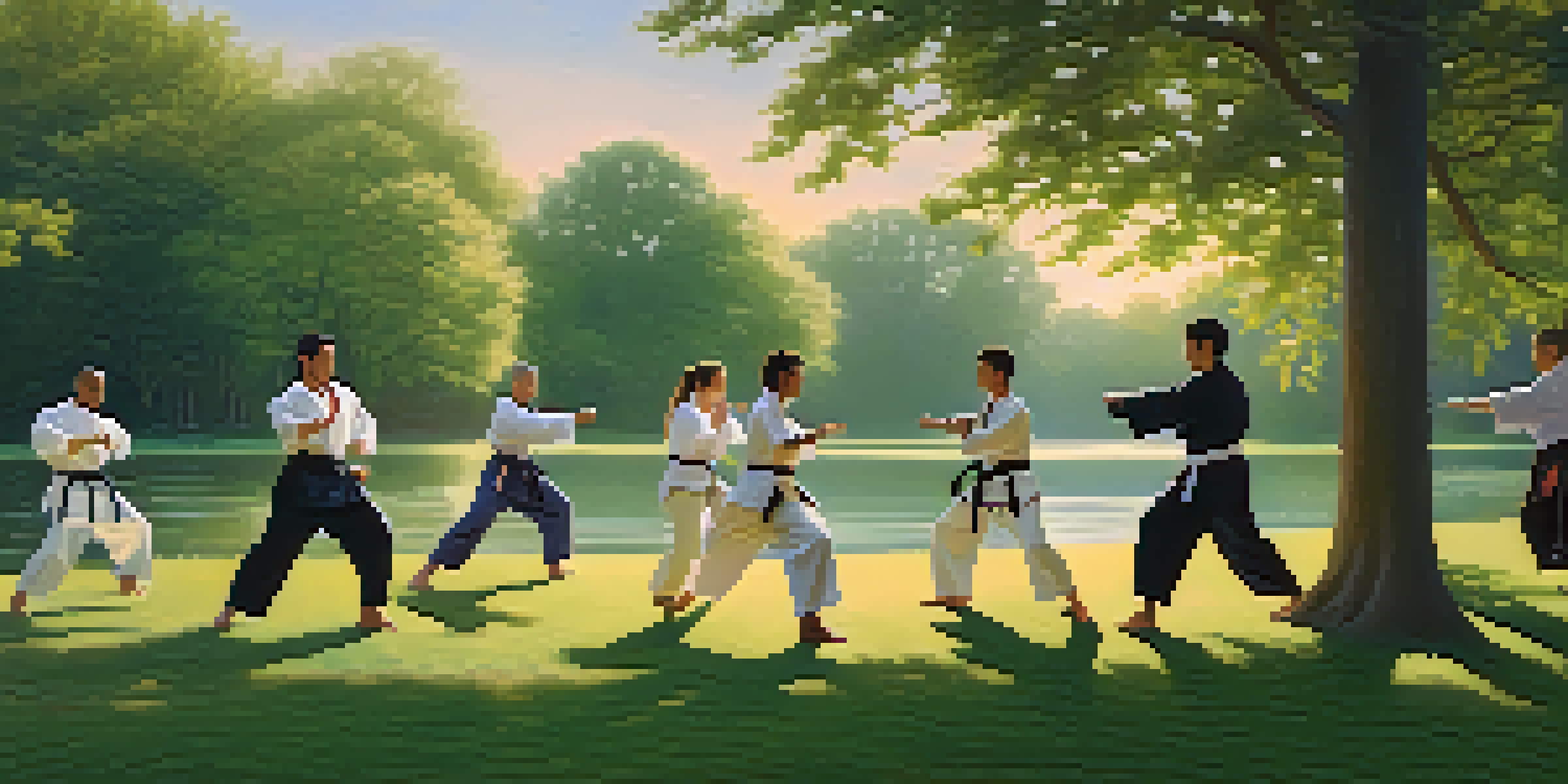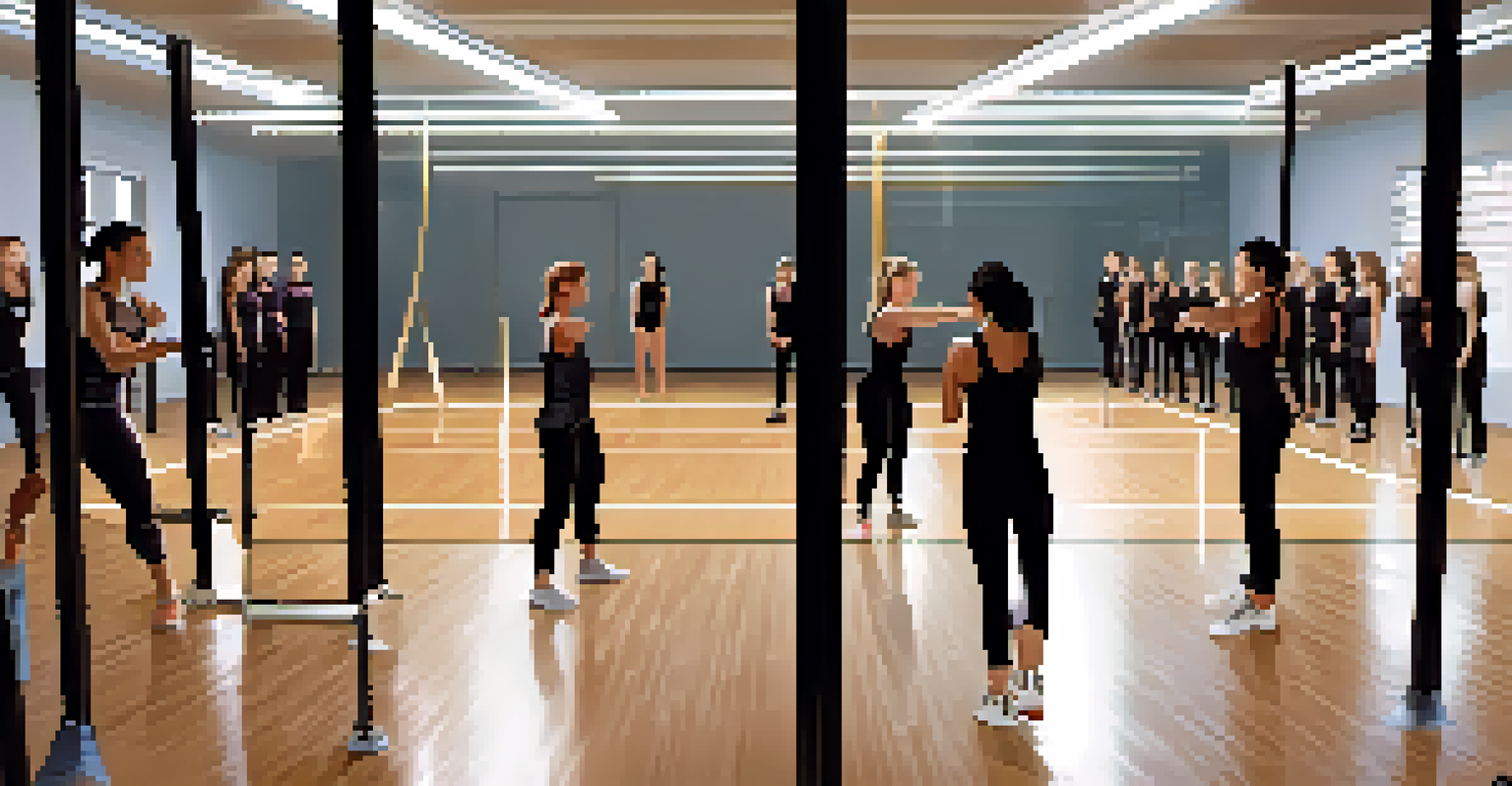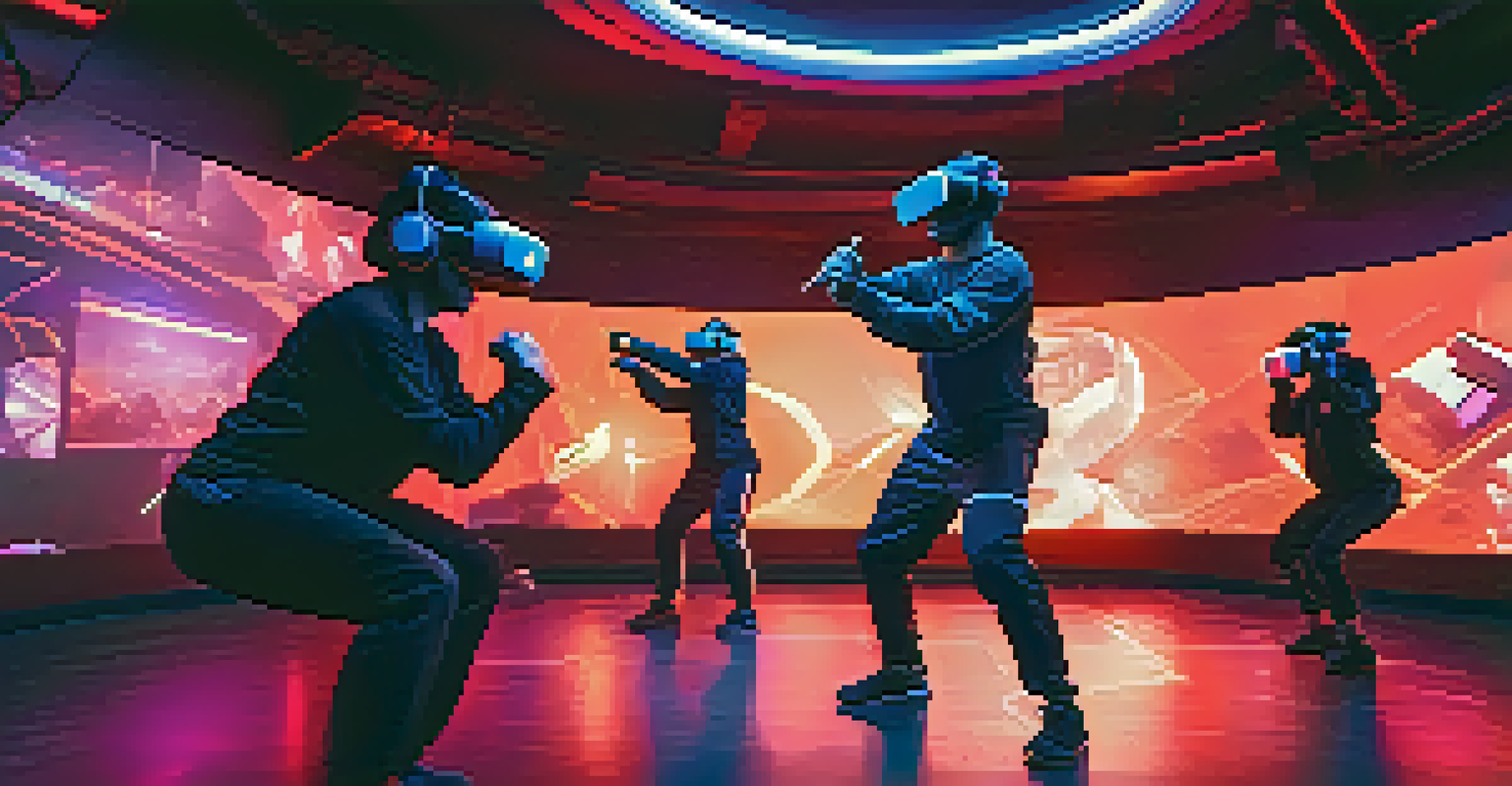The Evolution of Self Defense in Modern Western Cultures

Historical Roots of Self Defense Practices
The concept of self-defense can be traced back to ancient civilizations, where it was often tied to survival. In these early societies, self-defense techniques were simple and focused on protecting oneself from physical threats, such as wild animals or rival tribes. As societies evolved, so did the methods and philosophies surrounding self-defense, paving the way for structured systems and martial arts.
The best way to predict the future is to create it.
In medieval Europe, self-defense took on new forms, influenced by the rise of chivalry and the code of knighthood. Knights trained rigorously in combat techniques, not just for battle, but also for personal protection and honor. This period saw the development of various weapon-based self-defense strategies, which would eventually lead to the diverse martial arts we recognize today.
The blending of culture and necessity shaped self-defense practices further, as different regions adopted unique styles. For example, the emergence of fencing in Italy and France showcased a more refined approach to combat, while the English focused on unarmed techniques. This historical tapestry laid the groundwork for modern self-defense philosophies.
The Rise of Martial Arts in the 20th Century
As the 20th century approached, martial arts began to gain popularity in the West, influenced by the fascination with Eastern practices. Disciplines such as judo, karate, and kung fu were introduced, offering new perspectives on self-defense that emphasized discipline, respect, and physical fitness. This shift marked a significant change in how self-defense was perceived, moving from mere survival tactics to a holistic approach.

The introduction of martial arts competitions further popularized these practices, showcasing both the physical and mental benefits of training. Movies and media played a crucial role in glamorizing martial arts, with stars like Bruce Lee and Jackie Chan captivating audiences. This cultural exposure encouraged many to explore these disciplines as viable options for self-defense.
Evolution of Self-Defense Practices
Self-defense has transformed from basic survival techniques in ancient civilizations to structured martial arts and modern training programs.
Additionally, the growing awareness of self-defense for women during this era led to the creation of specialized programs. These initiatives aimed to empower women through self-defense training, promoting confidence and awareness. This movement not only changed perceptions but also opened doors for more inclusive self-defense practices.
Self Defense and the Legal Landscape
The legal aspects of self-defense have always been a contentious topic in Western cultures. Laws surrounding self-defense vary significantly from one region to another, influencing how individuals approach protection. Understanding these laws is crucial; they dictate when and how one can legally defend themselves against threats.
Self-defense is not a license to kill; it is a right to protect oneself.
In many places, the principle of 'reasonable force' is central to self-defense laws, allowing individuals to protect themselves without excessive retaliation. However, what constitutes reasonable can be subjective, often leading to legal battles and public debate. This complexity highlights the importance of education and awareness regarding self-defense rights.
Recent years have seen a push for clearer laws and better training for law enforcement on self-defense situations. Advocacy groups and legal experts are working together to ensure that individuals understand their rights while also promoting responsible self-defense practices. This evolution in the legal landscape reflects the ongoing need for balance between personal safety and societal norms.
Modern Self Defense Techniques and Training
In today's fast-paced world, self-defense training has become more accessible, with a variety of classes and programs available. From community centers to online courses, individuals of all ages can find resources to learn self-defense techniques tailored to their needs. This democratization of self-defense training encourages broader participation and awareness.
Contemporary self-defense classes often blend traditional martial arts with practical techniques applicable to real-life situations. Programs like Krav Maga focus on efficiency and effectiveness, teaching individuals how to defend against common attacks. This practical approach resonates with those seeking self-defense skills that are both relevant and effective.
Legal Aspects of Self-Defense
Understanding the legal framework surrounding self-defense is crucial, as laws vary significantly and influence individuals' approaches to protection.
Moreover, the emphasis on situational awareness has become a key component of modern self-defense training. Instructors now teach students to recognize potential threats and avoid dangerous situations before they escalate. This proactive mindset not only enhances personal safety but also fosters a community of informed individuals.
The Role of Technology in Self Defense
As technology continues to advance, it plays an increasingly vital role in self-defense strategies. Personal safety apps can alert authorities or loved ones in emergencies, providing an added layer of protection. These innovations reflect a shift towards incorporating technology into personal safety measures, making self-defense more accessible and efficient.
Additionally, self-defense gadgets, such as pepper spray and personal alarms, have become popular among individuals seeking to enhance their safety. These tools empower users to protect themselves without the need for physical confrontation. The integration of technology with traditional self-defense practices represents a modern evolution of the field.
Social media and online platforms also facilitate awareness and education around self-defense. Online communities provide support, resources, and shared experiences, making it easier for individuals to learn from one another. This digital aspect of self-defense is redefining how people connect and share information in their pursuit of safety.
Cultural Influences on Self Defense Practices
Cultural backgrounds play a significant role in shaping self-defense practices in Western societies. Different communities bring unique perspectives, techniques, and philosophies to the table, enriching the overall landscape of self-defense. This diversity allows individuals to find practices that resonate with their values and experiences.
For instance, the influence of African American culture has led to the development of styles like African martial arts, which incorporate traditional movements and philosophies. These practices emphasize community and self-empowerment, showcasing how culture can inform and enhance self-defense. This blending of cultures creates a richer tapestry of techniques and approaches.
Technology's Role in Self-Defense
Advancements in technology are reshaping self-defense strategies, from personal safety apps to innovative training methods that enhance awareness and preparedness.
Moreover, as globalization continues to connect people, there is a growing appreciation for cross-cultural training. Many practitioners are now exploring hybrid styles that incorporate elements from various martial arts, creating innovative self-defense systems. This evolution reflects the dynamic nature of self-defense, continually adapting to meet the needs of modern society.
Future Trends in Self Defense Practices
Looking ahead, the future of self-defense in Western cultures is likely to be influenced by ongoing societal changes. As awareness of personal safety grows, there may be an increase in self-defense training programs in schools and workplaces. This proactive approach aims to equip individuals with the skills they need to navigate a complex world safely.
Additionally, the fusion of technology and self-defense will continue to evolve, with innovations that enhance personal safety and training. Virtual reality and augmented reality may play a role in creating immersive training experiences, allowing individuals to practice scenarios in a safe environment. This technological advancement could revolutionize how we approach self-defense education.

Finally, the conversation around self-defense will likely expand to include mental health and emotional well-being. Understanding the psychological aspects of self-defense, such as confidence and situational awareness, will become increasingly important. This holistic approach will ensure that self-defense practices not only focus on physical skills but also nurture the mind and spirit.